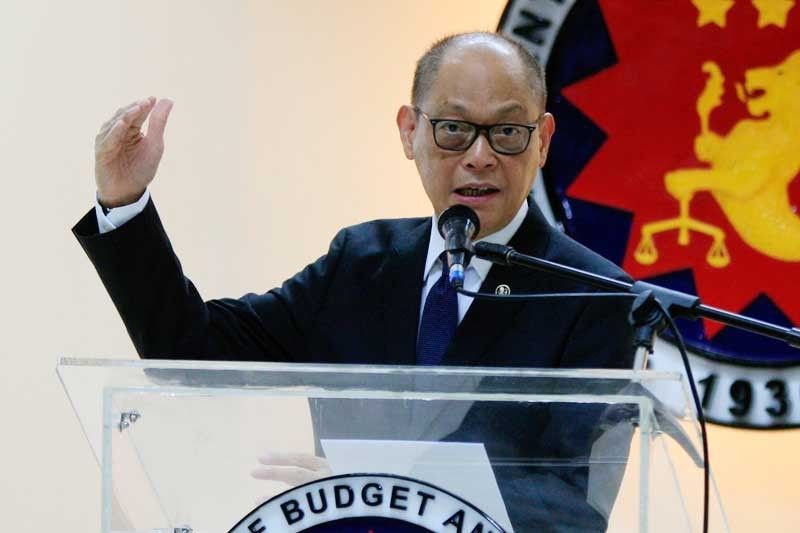YEARENDER: Build Build Build takes off in 2018

MANILA, Philippines — The Duterte administration’s economic growth strategy in the medium-term is heavily anchored on its ambitious infrastructure development program.
With a lot riding on this program — along with hopes of fixing the horrendous traffic in Metro Manila — all eyes are on the government and the pace it is able to implement 75 big-ticket infrastructure projects, which are expected to cost a whopping P9 trillion until 2022.
This year, the Department of Budget and Management (DBM) reported that the government’s Build Build Build program has finally kick-started its engines, and is gradually ascending toward full implementation.
“We’re already taking off. Many of our big-ticket items are already starting,” Budget Secretary Benjamin Diokno told The STAR in an interview.
According to the latest data from the DBM, the government’s infrastructure and other capital outlays in the first 10 months jumped by 50.3 percent to P665.1 billion from the P442.7 billion recorded in the same period last year.
Nicholas Mapa, senior economist at ING Bank Manila, said this pace in infrastructure spending growth shows “how intent the government is on achieving the so called golden age of infrastructure for the Philippines.”
More construction this year
Diokno said the surge in infrastructure disbursements may be attributed to base effects, as the Build Build Build program only started to take off this year.
“It was slow last year as we were only starting. Unfortunately, the previous administration did not leave us with feasibility studies,” Diokno said.
“It’s not easy to develop projects, and the more complex the project is, the longer it takes to prepare it,” he said.
In addition, Diokno said state agencies frontloaded the implementation of some projects during the first half, which is the dry season or the most ideal time to implement infrastructure projects.
Compared to last year, the budget chief said the government was able to implement more big-ticket items this year, even finishing some of the long-awaited projects.
He cited the P8.9 billion Bohol-Panglao International Airport, which was opened just last month to serve commercial flights in the province.
“When we came in it was five percent done and they were talking of three phases. So we did all phases simultaneously and now it is done,” Diokno said.
The DBM chief also mentioned the North Luzon Expressway (NLEX) Harbor Link Segment. The 8.25-kilometer toll road will connect McArthur Highway and C3, and decongest Metro Manila as it can provide access to NLEX without passing though EDSA or the Balintawak Toll Plaza.
Also recently opened was the P1.28 billion Laguna Lake Highway, a 6.94-kilometer highway which features a three-meter-wide bicycle lane and 1.5-meter sidewalk.
Formerly called C6, the road seeks to reduce travel time from Bicutan to Taytay, Rizal from an hour to about 30 minutes.
Meanwhile, the DBM said the P9.5- billion Light Rail Transit (LRT) Line 2 East (Masinag) Extension Project is currently undergoing construction.
The Japan-funded project involves the addition of two stations to the existing LRT-2 line to reduce travel time from Manila to Antipolo from three hours to as fast as 30 minutes.
Other projects currently in the construction phase according to the DBM are the Bonifacio Global City- Ortigas Center Road Link, Central Luzon Link Expressway Phase 11, and Cavite-Laguna Expressway, among others.
Diokno said the Clark International Airport Expansion project is also on track to be completed by the middle of next year, while the Department of Transportation (DOTr) is set to break ground for its Metro Manila Subway Project this month.
To aid in the faster delivery of these projects, Diokno said the DBM has also increased the government’s allocations specifically to address right-of-way (ROW) issues.
For 2018, the ROW budget was P36.7 billion, of which P20.6 billion went to the Department of Public Works and Highways (DPWH) and P16.1 billion to the DOTr.
The National Irrigation Administration was also allocated P30 million for ROW issues this year, while the National Housing Authority was given P577 million for its Resettlement Program, part of which will cover cost incurred for ROW acquisitions.
Furthermore, the DBM said it also continued to implement various budget reforms to make sure that the pace of government spending remains within target.
For one, the agency continued to limit the validity of the budget to one year instead of two to enforce fiscal discipline and efficiency in using the budget.
The budget department also released notices of cash allocations (NCAs) covering four quarters at the beginning of the year—shifting from the previous quarterly or semestral release schedule—to allow the prompt payment of goods and services.
Mapa, in an email to The STAR, said the brisk pace in public spending for infrastructure helped propel the growth of the country’s gross domestic product (GDP).
“Government outlays for infrastructure reflects in the strong showing for public construction in the GDP numbers, which have to some extent helped buttress slowing household final consumption,” Mapa said.
“As such, the Philippines is now able to rely on other sources of growth, aside from the traditional household spending, to bring a more balanced attack with both capital formation (where infrastructure spending is lodged) and government spending,“ he said.
Michael Ricafort, head of the Economics and Industry Research Division of the Rizal Commercial Banking Corp., echoed Mapa, noting how government spending, especially on infrastructure, as well as sustained growth in investments offset the slower growth in consumer spending.
“Increased government spending on infrastructure, especially in areas outside Metro Manila, would help in further increasing economic growth and development, especially in the countryside,” Ricafort said.
Economic growth slowed down to 6.1 percent in the third quarter from the revised second quarter figure of 6.2 percent.
For the whole year, economic managers lowered the country’s GD growth target to 6.5 percent to 6.9 percent.
Outlook
Overall, Diokno expressed confidence that the Duterte administration is currently on track in terms of the Build Build Build program’s implementation.
“We’re on-track because when you build, it’s like an S-curve. It’s slow at first then it will accelerate,” he said.
However, Diokno said the government may need to slow down with its spending for the rest of the year to keep fiscal deficit within the ceiling of three percent of GDP.
“For the rest of the year, we will slightly slow down because we are already slightly overspending,” the secretary said.
Based on the quarterly fiscal program of the government, infrastructure spending as of end-third quarter was already 7.2 percent above program, while total government disbursements exceeded target by 2.6 percent at P2.49 trillion.
Diokno said he is hoping to accelerate capital expenditures again next year, but this would depend on Congress’ timely approval of the P3.757 trillion proposed 2019 budget.
The DBM chief earlier warned that failing to pass the budget before the end of the year and depending on a reenacted budget may reduce disbursements by around P220 billion in 2019 as it could delay the implementation of infrastructure projects by five months.
Despite this, Diokno said the Development Budget Coordination Committee is expected to maintain its P3.746 trillion disbursement program for 2019.
“We’ll adjust the quarterly (program), but the full-year (target) is the same,” he said.
He said the government would need to catch up with the construction of projects in the latter half of the year to achieve its targets.
“There will be a catch-up period. But that will only be allowed if there are no severe weather disturbances,” he said.
- Latest
- Trending


























